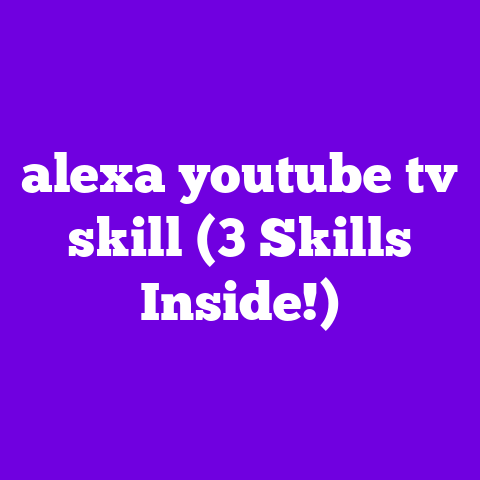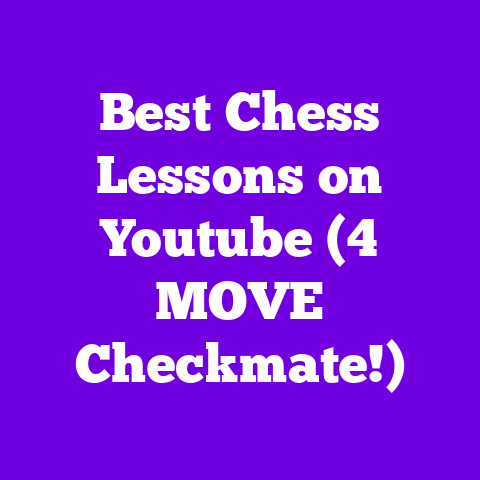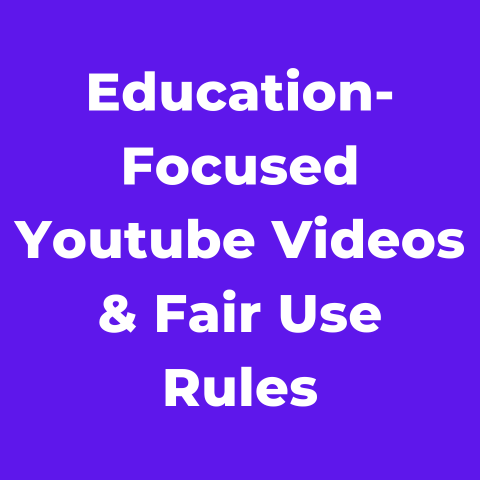Machine Learning YouTube (4-Hour Build?)
Imagine this: It’s 2025. YouTube is flooded with machine learning (ML) content.
Creators are breaking down complex algorithms, building incredible projects, and teaching thousands – all from their bedrooms.
But here’s the kicker: they’re doing it efficiently.
The secret? A streamlined approach.
A “4-hour build” for ML content creation.
This isn’t some pipe dream. It’s a real, achievable goal for you, the aspiring or established YouTube creator.
I believe that by 2025, you can leverage innovative strategies and tools to create engaging, high-quality ML videos in a fraction of the time. Let’s dive in!
Section 1: Understanding Machine Learning Content
So, what exactly is machine learning?
Simply put, it’s about teaching computers to learn from data without explicit programming.
Instead of writing code that tells a computer exactly what to do, you feed it data, and it learns patterns and makes predictions.
Think self-driving cars, personalized recommendations on Netflix, or even medical diagnoses.
Machine learning is everywhere.
And its relevance is only growing across healthcare, finance, entertainment, and more.
Now, what about the ML content landscape on YouTube? It’s booming! Channels like Two Minute Papers, Sentdex, and Siraj Raval have paved the way, showcasing various video formats.
We see everything from in-depth tutorials and project showcases to theoretical discussions.
What’s working right now?
- Tutorials: Step-by-step guides are always popular.
- Project Showcases: Seeing ML in action is captivating.
- Explainers: Breaking down complex topics simply.
Let’s talk about your audience. Who are they?
Generally, they’re tech enthusiasts, students, developers, and professionals looking to upskill. They crave practical knowledge, real-world examples, and clear explanations.
According to Statista, the online learning market is projected to reach \$325 billion by 2025. (Statista, 2023).
That’s a massive opportunity for ML content creators! But what kind of content are they looking for?
Based on my observations and community feedback, the most sought-after ML content includes:
- Beginner-friendly introductions: Demystifying the basics.
- Practical project tutorials: Building something tangible.
- Career advice: Navigating the ML job market.
- Ethical discussions: Exploring the responsible use of AI.
Section 2: The Power of the 4-Hour Build Framework
Okay, let’s get to the heart of the matter: the 4-hour build framework.
Why is this important? Because time is your most valuable asset.
You’re not just a content creator; you’re probably juggling a job, studies, or other commitments.
The 4-hour build is designed to help you produce high-quality ML videos without sacrificing your entire week.
It breaks down the process into four key components:
- Planning (1 hour)
- Content Creation (2 hours)
- Editing (30 minutes)
- Publishing & Promotion (30 minutes)
Let’s break down each section.
Planning (1 hour)
This is where the magic starts. Don’t skip this step!
A well-planned video is a successful video.
Start by brainstorming ideas. What topics are trending? What questions are people asking?
Use tools like Google Trends or AnswerThePublic to identify popular keywords and search queries related to machine learning.
Next, select a topic that aligns with your expertise and audience interests. Consider these questions:
- What am I passionate about?
- What can I explain clearly?
- What problem can I solve for my audience?
Once you have a topic, create a detailed outline. This is your roadmap for the video.
Break it down into sections, sub-sections, and bullet points. Think of it as a script, but more flexible.
Here’s a sample outline for a video on “Building a Simple Image Classifier with TensorFlow”:
- Introduction (0:00-0:30): Briefly explain image classification and its applications.
- Setting up the Environment (0:30-1:00): Installing TensorFlow and necessary libraries.
- Loading and Preprocessing Data (1:00-2:00): Downloading and preparing the dataset.
- Building the Model (2:00-3:00): Defining the neural network architecture.
- Training the Model (3:00-4:00): Training the model on the training data.
- Evaluating the Model (4:00-5:00): Assessing the model’s performance on the test data.
- Making Predictions (5:00-6:00): Using the model to classify new images.
- Conclusion (6:00-6:30): Summarizing the key steps and encouraging further exploration.
Remember to tailor your script to your audience.
Are they beginners? Use simple language and avoid jargon. Are they experienced developers? Dive deeper into the technical details.
Content Creation (2 hours)
Now it’s time to bring your outline to life!
This is where you record your video, create visuals, and prepare your coding demonstrations.
Efficiency is key here. Don’t aim for perfection on the first take. Focus on conveying the information clearly and engagingly.
Here are some tips for efficient recording:
- Use a good microphone: Audio quality is crucial.
- Prepare your environment: Minimize distractions.
- Record in chunks: Break the video into segments.
- Don’t be afraid to make mistakes: You can edit them out later.
For coding demonstrations, screen capturing software like OBS Studio is your best friend.
Practice your code beforehand to avoid errors during the recording. Annotate your code clearly so viewers can follow along.
Visuals are essential for keeping viewers engaged.
Use slides, animations, and diagrams to illustrate complex concepts. Websites like Canva offer free templates for creating professional-looking visuals.
Remember, you don’t need fancy equipment to create great content. A decent microphone, screen recording software, and clear visuals are enough to get started.
Editing (30 minutes)
This is where you polish your raw footage into a compelling video.
The goal is to enhance the video’s clarity and engagement without spending hours on complex effects.
Quick editing tools like DaVinci Resolve (free version) and Filmora are perfect for this.
Focus on these essential editing tasks:
- Cutting out mistakes: Remove any errors or pauses.
- Adding transitions: Smoothly connect different segments.
- Adding text overlays: Highlight key points and concepts.
- Adding background music: Enhance the video’s mood.
Don’t get bogged down in perfectionism. Aim for “good enough” rather than “perfect.”
Remember, the goal is to deliver valuable information in a clear and engaging way.
Publishing & Promotion (30 minutes)
Your video is ready! Now it’s time to share it with the world.
Optimizing your video for search is crucial.
Craft a compelling title that includes relevant keywords. Write a detailed description that summarizes the video’s content.
Use relevant tags to help YouTube understand what your video is about.
Tools like TubeBuddy can help you identify relevant keywords and optimize your video for search.
Promotion is just as important as optimization.
Share your video on social media platforms like Twitter, LinkedIn, and Facebook.
Engage with your audience in the comments section. Answer questions, respond to feedback, and build a community around your channel.
Consider creating a thumbnail that grabs attention.
Canva is a great tool for creating eye-catching thumbnails.
Section 3: Essential Tools and Resources for ML Creators
To streamline your video production, you’ll need the right tools.
Here’s a rundown of essential tools and resources:
-
Machine Learning Libraries and Frameworks:
- TensorFlow: A powerful open-source library for building and training ML models.
- PyTorch: Another popular framework known for its flexibility and ease of use.
- Scikit-learn: A versatile library for various ML tasks, including classification, regression, and clustering.
-
Recording and Editing Software:
- OBS Studio: A free and open-source software for recording and streaming video.
- DaVinci Resolve: A professional-grade video editing software with a free version.
- Filmora: A user-friendly video editing software with a wide range of features.
-
Visuals and Media:
- Canva: A graphic design platform for creating visuals, thumbnails, and presentations.
- Pexels: A website offering free stock photos and videos.
- Unsplash: Another great source for free high-quality images.
-
Collaboration Tools:
- Discord: A platform for building and engaging with your community.
- Trello: A project management tool for organizing your video production workflow.
- Google Docs: A collaborative document editor for writing scripts and outlines.
Don’t underestimate the power of community.
Connect with other ML creators, share ideas, and collaborate on projects.
Online forums, social media groups, and conferences are great places to network and learn from others.
Section 4: Engaging Your Audience in the ML Space
Creating great content is only half the battle.
You also need to engage your audience and build a community around your channel.
Here are some strategies for engaging your audience:
-
Interactive Content:
- Polls: Ask your audience questions and gather their feedback.
- Q&As: Answer questions from your audience in live streams or dedicated videos.
- Live Coding: Build projects live and interact with your audience in real-time.
-
Content Formats:
- Case Studies: Showcase successful ML applications in different industries.
- Challenges: Create coding challenges for your audience to participate in.
- Explainers: Break down complex ML concepts into digestible segments.
-
Viewer Feedback and Analytics:
- Pay attention to comments: Respond to questions and address concerns.
- Analyze your video analytics: Identify what’s working and what’s not.
- Ask for feedback: Solicit suggestions from your audience on how to improve your content.
Remember, building a community takes time and effort.
Be patient, consistent, and genuine. Focus on providing value to your audience, and they’ll reward you with their loyalty and support.
Section 5: Future Trends in ML YouTube Content Creation
Looking ahead to 2025, several trends will shape the future of ML YouTube content creation.
- AI-Assisted Content Creation: AI tools will automate tasks like scripting, editing, and thumbnail creation.
- Ethical Discussions: Demand for content addressing the ethical implications of AI will grow.
- Niche Channels: More channels will focus on specific ML applications or industries.
- Immersive Content: VR and AR will create immersive learning experiences.
I believe that the rise of AI-assisted content creation tools will be a game-changer.
Imagine using AI to generate video scripts, create animations, or even edit your videos automatically.
While this may sound like science fiction, it’s already becoming a reality.
Companies like Descript and Murf AI are developing tools that use AI to automate various aspects of video production.
The increased demand for ethical discussions around AI is another important trend to watch.
As AI becomes more pervasive, it’s crucial to address its potential risks and biases.
Content creators who can provide insightful and balanced perspectives on these issues will be highly valued.
The growing importance of niche channels is also worth noting.
Instead of trying to cover everything related to machine learning, focus on a specific area that you’re passionate about.
This will allow you to build a loyal audience and establish yourself as an expert in your field.
Finally, the potential for immersive content experiences is incredibly exciting.
Imagine learning about neural networks by exploring a virtual brain in VR, or training an ML model in an AR simulation.
While these technologies are still in their early stages, they have the potential to revolutionize ML education.
Conclusion
The future of machine learning on YouTube is bright.
With the right strategies, tools, and mindset, you can create engaging, high-quality content that makes a real impact.
The 4-hour build framework provides a structured approach to producing videos efficiently, allowing you to balance your content creation efforts with other priorities.
I encourage you to embrace the evolving landscape of machine learning on YouTube and start building your channel today.
Don’t be afraid to experiment, learn from your mistakes, and connect with your audience.
The journey may be challenging, but the rewards are well worth it.
So, what are you waiting for?
Unleash your creativity, share your knowledge, and become a part of the machine learning revolution on YouTube!





